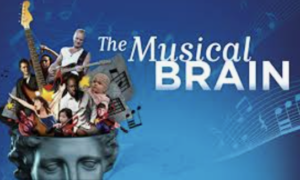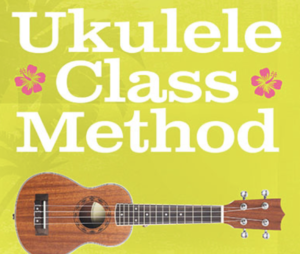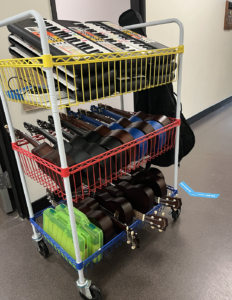HMW shift the mindset of music education towards SEL and meaningful cultural experiences and student agency?
As I grappled with this question, I realized there were several pathways to choose from. At the beginning of the year, we explored how we respond to our favourite songs. Students created a playlist of musical choices they know influence a calm state of mind, or can infuse energy in themselves. A large part of our music curriculum is learning an instrument. How can this be a more meaningful experience for students. We start with our “why.” Why is learning to play a musical instrument important?
In Grades 3-5, we explored the idea of why we learn a musical instrument at school. What is happening in our brains? Why is it important? What impact can learning an instrument have on our lives? When we unpacked how busy the brain is while listening, looking at notation, or thinking about how to play the notes, moving fingers, breathing etc, students were surprised to discover that playing a musical instrument involves the whole brain. Playing a musical instrument is the only activity there is that involves the entire brain. Check out this short video which explains the science and research supporting this concept.
My students were completely blown away to learn that their brain benefits from this intensive workout regardless of their skill level. The key is to try their best, Students agreed that this is an achievable goal and that over time, their brains will develop neural pathways that will impact their ability to self-regulate and problem solve. One student’s big “aha moment” was “Playing an instrument is my superpower”
Grade 3 students are playing ukulele and are excited to start the recorder soon. Grades 4 and 5 are playing chords on ukulele, keyboard or guitar and are jamming together learning chord patterns, and playing along with their favourite songs. While performing together they are bonding as a class. I have observed students help each other learn the chords during practise time and encourage each other while working on challenging chord transitions and then cheer for each other at the end of a song.
During this process, I have learned that all students are able to participate regardless of their skill level. There were a few students who needed my guidance to access their potential, due to a lack of confidence. Other required step-by-step modeling or colour-coded stickers to easily differentiate between the different chords as well as increasing fine motor skills to get the desired tone quality. Some solutions needed to be creative, but there was always a solution to every challenge. When encouraged to learn one chord or play one note from the chord instead of all three, they could be part of the song. Spirits are lifted and I have seen students who might struggle with academics shine when playing an instrument. When referring to the Mood Metre at the end of the class, most report a positive change in their mood and move their magnet on their class chart to reflect this.
The resources I use are the Ukulele Class Method offered by Essential Elements for the Classroom. In Grades 4 and 5, I added Musical Futures Online which is an excellent resource providing visual chord pattern play- along videos for current popular music as well as classics.
This endeavour has been a very positive process and I am looking forward to what comes next. It was challenging to make this happen from a cart, but I found a way to make it work. When I walk into each classroom, there is always excitement, which is uplifting for me. Their playing is not particularly polished or technically perfect, but there is joy which is lovely to see. Next we will work towards playing and singing simultaneously, which is very challenging at this age.
Grade 3 students are playing ukulele and are excited to start the recorder soon. Grades 4 and 5 are playing chords on ukulele, keyboard or guitar and are jamming together learning chord patterns and playing along with their favourite songs. While playing together they are bonding as a class. I have seen students help each other learn the chords during practise time and encourage each other while working on challenging chord transitions and then cheer for each other at the end of a song.
What did I learn in the process? All students are able to participate regardless of their skill level. There were a few students who needed my guidance every step of the way due to a lack of confidence or challenges with fine motor skills. When encouraged to learn one chord or play one note from the chord instead of all three, they could be part of the song. Spirits are lifted and I have seen students who might struggle with academics shine when playing an instrument. When referring to the Mood Metre at the end of the class, most report a positive change in their mood and move their magnet on their class chart to reflect this. Students are inspired to research their favourite songs individually and are asking to pair up or work in small groups to play new chord patterns which is exciting.
The resources I use are the Ukulele Class Method offered by Essential Elements Music Class In Grades 4 and 5, I added Musical Futures Online which is an excellent resource providing playalongs for current popular music as well as classics.
This has been a very positive process and I am looking forward to what comes next. It was challenging to make this happen from a cart, but I found a way to make it work.
When I walk into each classroom, there is always excitement, which is uplifting for me. Their playing is not particularly polished, or technically correct for everyone, but there is a joyful atmosphere in each room, which is lovely to see. Next, I would like to examine intentionally harnessing the focus achieved after an instrumental performance, to investigate if student engagement is elevated in a Math class, for example. Alternatively, a student could use music as a tool to help them self-regulate when needed outside of their scheduled music class. Students are asking for access to instruments in their classroom, which is encouraging! Hmm, a possibility, perhaps for next season! In the meantime, here is an example of where we are now in one G5 class. 5C – Happier Day 1




I think you said it best @lyorke with “there is a joyful atmosphere” and where there is joy, there is fertile ground for learning!
What an awesome project and as a French teacher who has feared a cart, yet avoided it for my entire career, your cart is amazing and I can just picture the faces of those students as the wheels hit the threshold and the cart comes into view at the door.
You mention confidence as a barrier to taking risks and obviously, this is a huge piece of the puzzle. It makes me wonder what experiences these children have had that have led to that lack of confidence with new things and how wonderful it is that playing an instrument and improving bit by bit will help them build a foundation for learning new things experientially throughout their entire lives. You truly are helping them to unlock their super powers!
Can’t wait to see what shape this new learning takes in the future!